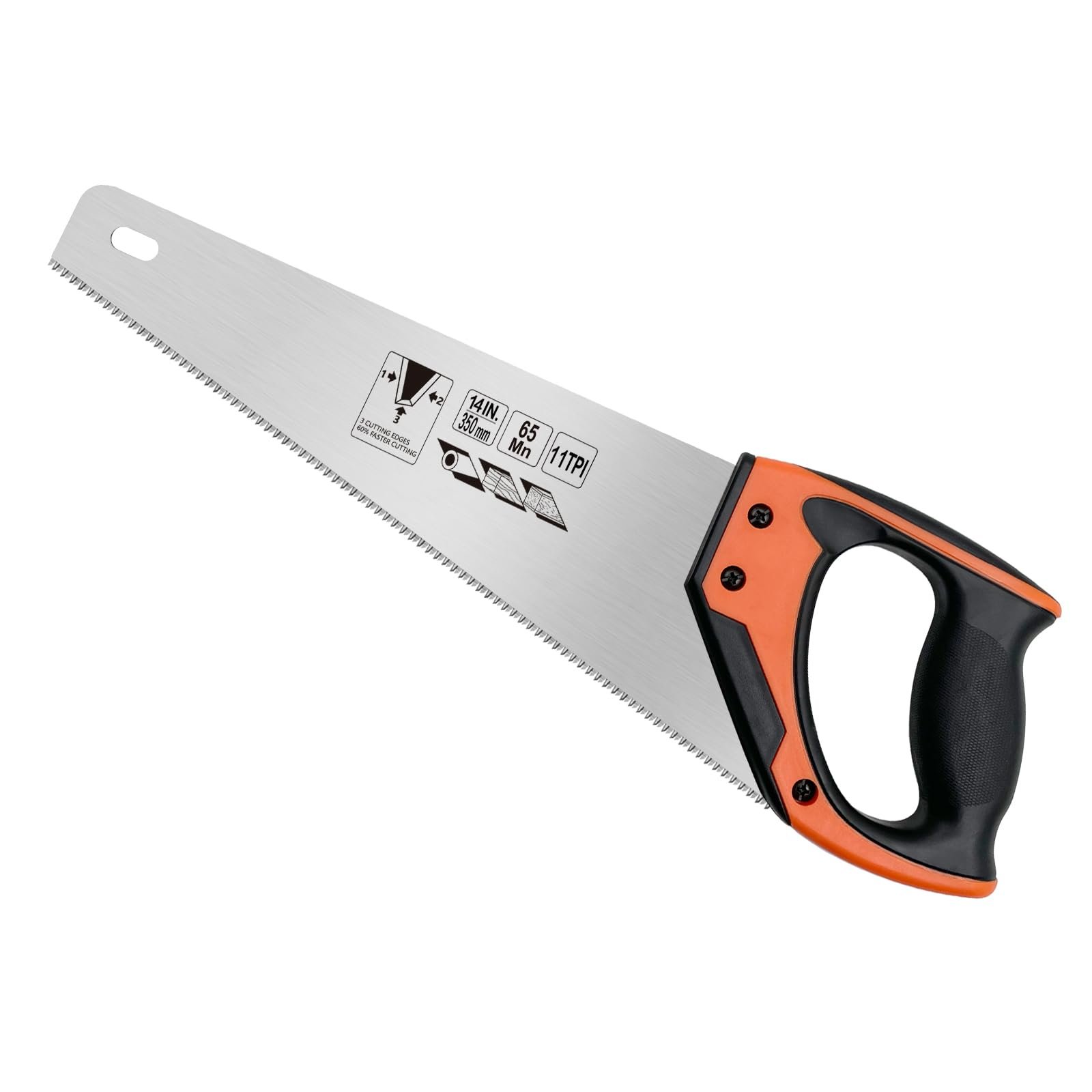A hand saw is a versatile tool that every DIY enthusiast should have in their arsenal. Its ability to effortlessly cut through various materials makes it a must-have for woodworking projects. The satisfying sound of the blade slicing through wood is a music to the ears of craftsmen. Hand saws come in different types, each tailored for specific tasks, ensuring precision and efficiency. Follow along as we delve into the world of hand saws and uncover the secrets of making clean, precise cuts effortlessly.
The Power of the Hand Saw: A Detailed Guide to this Essential Tool
Introduction to Hand Saws
Imagine a world without power tools, where everything was crafted by hand using simple yet effective tools like the hand saw. In this guide, we will explore the wonders of the hand saw, a tool that has been used for centuries to cut through wood and other materials with precision and accuracy. Whether you are a woodworking enthusiast, a DIY hobbyist, or a professional carpenter, the hand saw is an essential tool that should not be overlooked.
History and Evolution of Hand Saws
Hand saws have been around for thousands of years, dating back to ancient civilizations such as the Egyptians and the Romans. These early hand saws were simple tools made of bronze or iron and featured a blade with teeth for cutting through wood. Over the centuries, hand saws have evolved and improved, with advancements in blade design, handle materials, and cutting mechanisms.
Types of Hand Saws
There are various types of hand saws designed for specific cutting tasks. The most common types of hand saws include:
1. Crosscut Saw: This type of hand saw is designed for cutting across the grain of the wood, producing smooth and clean cuts.
2. Rip Saw: The rip saw is used for cutting along the grain of the wood, making it ideal for tasks that require long, straight cuts.
3. Backsaw: The backsaw is a precision hand saw with a rigid back that provides extra support for accurate cuts, making it suitable for fine woodworking projects.
4. Coping Saw: This versatile hand saw features a thin blade stretched across a C-shaped frame, allowing for intricate and curved cuts in wood and other materials.
How to Use a Hand Saw
Using a hand saw may seem daunting at first, but with practice and the right technique, you can achieve precise and clean cuts. Here are some tips for using a hand saw effectively:
1. Choose the right saw for the task at hand. Consider the type of cut you need to make and select the appropriate hand saw for the job.
2. Secure the workpiece firmly in place using clamps or a vise to prevent it from moving while cutting.
3. Hold the hand saw firmly with one hand on the handle and the other hand on the front of the blade to guide the cut.
4. Start the cut with gentle, even strokes, letting the saw do the work. Avoid applying too much pressure, as this can cause the blade to bind.
5. Use a marking tool to outline the cut line before sawing to ensure accuracy and precision.
Maintaining Your Hand Saw
Proper maintenance is essential to keep your hand saw in top condition and ensure longevity. Here are some maintenance tips to help you care for your hand saw:
1. Clean the saw blade regularly with a brush to remove any sawdust and debris that can impair cutting performance.
2. Check the blade for any signs of damage or dullness, and sharpen it as needed using a file or a saw sharpening tool.
3. Store your hand saw in a dry place away from moisture to prevent rust and corrosion.
4. Inspect the handle and make sure it is secure and free of cracks or damage that could affect grip and control.
Benefits of Using a Hand Saw
While power tools have their place in modern woodworking and construction, there are several benefits to using a hand saw that should not be overlooked:
1. Portability: Hand saws are lightweight and portable, making them easy to carry to job sites or work areas without the need for power outlets or batteries.
2. Precision: Hand saws offer greater control and precision, allowing for intricate and detailed cuts that may be challenging with power tools.
3. Cost-Effective: Hand saws are more affordable than many power tools, making them a budget-friendly option for DIY enthusiasts and hobbyists.
4. Quiet Operation: Unlike power tools, hand saws operate quietly, making them ideal for working in environments where noise must be minimized.
In conclusion, the hand saw is a versatile and essential tool that has stood the test of time as a reliable cutting instrument. Whether you are woodworking, crafting, or making repairs around the house, the hand saw remains a valuable addition to any tool kit. By understanding the different types of hand saws, how to use them effectively, and the benefits they offer, you can unleash the full potential of this timeless tool. So, next time you pick up a hand saw, remember the craftsmanship and precision that this humble tool embodies.
How To Use Hand Saws – Ace Hardware
Frequently Asked Questions
How do I choose the right hand saw for my project?
When selecting a hand saw, consider the type of material you will be cutting, the desired cut finish, and the size of the job. For example, a crosscut hand saw is ideal for cutting across the wood grain, while a rip hand saw is best for cutting along the wood grain. Choose a hand saw with the appropriate tooth count for the job to ensure efficient cutting.
How should I maintain my hand saw for optimal performance?
To keep your hand saw in top condition, regularly clean the blade with a damp cloth to remove any debris or sap. Use a file to sharpen the teeth as needed and apply a light coat of oil to prevent rust. Store your hand saw in a dry place to avoid moisture damage.
What safety precautions should I follow when using a hand saw?
When using a hand saw, always wear appropriate safety gear such as goggles and gloves to protect your eyes and hands. Ensure a secure grip on the saw handle and keep your fingers away from the cutting path. Use clamps to secure the material being cut and make steady, controlled movements to avoid accidents.
Final Thoughts
In conclusion, the hand saw remains a versatile and essential tool for any woodworking project. Its simplicity and efficiency make it a go-to option for both professionals and hobbyists. With a sharp blade and proper technique, the hand saw can make precise cuts in various materials. Embracing the hand saw in your toolkit ensures reliable and precise results in your woodworking endeavors.


